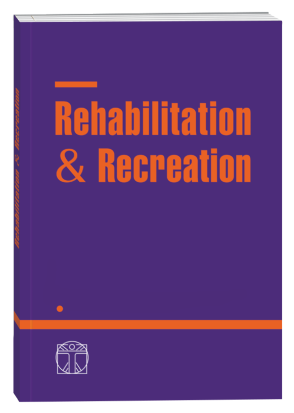KONTROLA ZACHOWAŃ AGRESYWNYCH I POZIOM AGRESJI WŚRÓD MŁODZIEŻY W SZKOLE ŚREDNIEJ
DOI:
https://doi.org/10.32782/2522-1795.2022.10.11Ключові слова:
zachowania młodzieży, psychologia, skłonności agresywne, środowisko, brutalność.Анотація
Agresja w obecnych czasach jest zjawiskiem tak powszechnym, iż każdy z nas spotyka się z nią w swo-im codziennym życiu. Czy to w domu, czy na ulicy, w parku, czy w szkole agresja coraz intensywniej roz-tacza swoje kręgi zarówno wśród ludzi dorosłych, jak i wśród dzieci i młodzieży. Coraz częściej jesteśmyświadkami brutalnych zachowań, słyszymy ciągłe przekleństwa, a wulgarne wyzwiska stają się dla ludzi“chlebem powszednim”. Agresja i przemoc to zjawiska, którym poświęca się coraz więcej uwagi, zarów-no w pracach naukowych jak i w środkach masowego przekazu. Nie ma dnia, żebyśmy nie przeczytaliw gazecie, lub nie usłyszeli w telewizji o akcie przemocy. Ma to związek z ogromem skali i drastycznościątego zjawiska. Agresja i przemoc stanowią jeden z bardziej niepokojących problemów. Z przyczyn oczy-wistych zjawisko to budzi duże zaniepokojenie społeczne. Ciągle wzrasta liczba młodych ludzi, którzy sta-ją się agresywni, a jeszcze częściej słyszy się o ofiarach przemocy. Obecne czasy doprowadziły do tego, żeprzemoc staje się środkiem dotarcia do zamierzonych celów. Świadomość problemu agresji mają jedynieofiary i osoby zagrożone nią. Skala zjawiska agresji stale wzrasta, a ilość wykroczeń dokonywanych przezuczniów bije na alarm. W polskiej szkole problem przemocy staje się coraz poważniejszy. Częste są przy-padki agresji nie tylko wśród uczniów, ale także w stosunku do nauczycieli. W szkołach narasta poczuciebezradności wobec agresji i przemocy. Zasada współpracy i wzajemnej pomocy została zastąpiona zasadądominacji, wymuszenia i siły. Prowokacyjne zachowania uczniów, nadpobudliwość ruchowa, niezdolnośćdo koncentracji i niechęć do zdobywania wiedzy sprawiają, że nauczanie stało się niezwykle trudne. Corazczęściej pojawiają się przypadki ignorowania poleceń nauczyciela, ośmieszania dorosłych, wandalizmu.Uczniowie rozgrywają swoistą walkę z nauczycielami, a także ze swoimi kolegami. Powstaje komunikacjaoparta na zdobywaniu przewagi i wymuszeniu uległości. Korytarz szkolny stał się areną niepożądanychzachowań. Przemoc słowna: wulgaryzmy, przekleństwa, wyzwiska padają zarówno z ust chłopców jaki dziewcząt. Bardzo często obserwuje się przemoc fizyczną – zabieranie przedmiotów, bójki, popychania.Częstym zjawiskiem jest wykorzystywanie przez starsze roczniki młodszych uczniów. Obecnie licznewyniki badań naukowych wskazują na przyczyny agresji w trzech obszarach: genetycznym, biochemicz-nym i środowiskowym. Liczne grono badaczy praktycznie na całym świecie prowadzi aktualnie badania,które można byłoby określić jako poszukiwania genu agresji. W toku tych badań pod koniec lat sześćdzie-siątych naszego wieku naukowcy wpadli na interesujący trop, którym miał być dodatkowy chromosom Y,którego obecność wykryto u 3 % mężczyzn przebywających w więziennych szpitalach psychiatrycznych.Ponieważ była to częstotliwość znacznie przekraczająca przeciętną w całym społeczeństwie, podwójnychromosom Y uznany został przez niektórych naukowców za oznakę agresywnej osobowości. Sytuacjauległa zmianie, gdy szersze badania dowiodły, że większość jego nosicieli to spokojni ludzie nie wyka-zujący żadnych szczególnie agresywnych skłonności. W dalszym ciągu prowadzone są badania mająceokreślić wpływ genów na poziom agresji i być może ostatnie badania i sukcesy naukowców na drodzepoznania ludzkiego DNA przyniosą w tym zakresie bardziej precyzyjne rezultaty.
Посилання
Aronson E. Wilson T. D. Akert R. M.Psychologia społeczna. Serce i umysł. Poznań,1997.
Frączek A., Pufal I. Agresja wśród dziecii młodzieży. Perspektywa psychoedukacyjna.Kielce, 1996.
Frączek A. Studia nad psychologicznymimechanizmami czynności agresywnych.Wrocław, 1979.
Freud S. Wstęp do psychoanalizy.Warszawa, 1984.
Gracz J., Sankowski T. Psychologia sportu.Poznań, 1995.
Gracz J. Działania agresywnea wychowanie fizyczne i sport. Warszawa, 2007.
Kashuba V., Andrieieva O., Yarmak O.,Grygus O., Napierala M., Smolenska O.,Ostrowska M., Hagner-Derengowska M.,Muszkieta R., Zukow W. (2021). Morpho-functional screening of primary school studentsduring the course of physical education. Journalof Physical Education and Sport. 21(2): 748–756.
Kmiecik-Baran K. Młodzież i przemoc.Mechanizmy socjologiczno-psychologiczne.Warszawa, 1999.
Libiszowska-Żółtkowska M., Ostrow-ska K. Agresja w szkole. Diagnoza i profilaktyka.Warszawa, 2008.
Plich T. Agresja i nietolerancja wśróddzieci i młodzieży jako zjawisko społeczne.Warszawa, 1996.
Pufal-Struzik I. Agresja i przemocw szkole. Przyczyny, rozpoznawanie,zapobieganie. Kielce, 2007.
Rejzner A. Agresja w szkole: spojrzeniewieloaspektowe. Warszawa, 2004.
Rychta T. Zjawiska patologii społecznejw sporcie. Gdańsk, 1994.
Sadowski B., Chmurzyński J. Biologicznemechanizmy zachowania się. Warszawa, 1989.
Skórny Z. Psychologiczna analizaagresywnego zachowania się. Warszawa,1968.
Stach R. Zachowania agresywne.Wrocław, 1991.
Stępień P. Genetyka agresji. Kraków,1999.
Szymborski K. W poszukiwaniu genuagresji. Warszawa, 1999.
##submission.downloads##
Опубліковано
Як цитувати
Номер
Розділ
Ліцензія

Ця робота ліцензується відповідно до Creative Commons Attribution-NonCommercial-NoDerivatives 4.0 International License.












